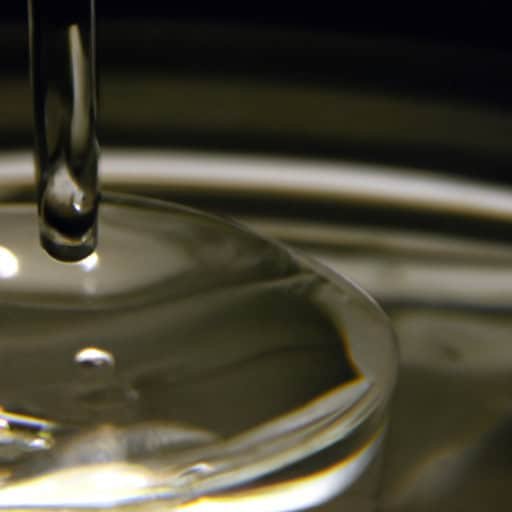You may not think about it often, but ensuring the cleanliness and safety of your well is crucial for your health and the wellbeing of your household. In this article, we will explore the best practices and steps to take when it comes to disinfecting and chlorinating your well. From understanding the importance of regular maintenance to learning about the necessary equipment and products, you will be equipped with the knowledge to handle this task with confidence and ease. Keep reading to discover how to ensure your well remains a reliable source of clean and safe water for years to come.
Factors to Consider before Disinfecting your Well
Disinfecting your well is an important step in maintaining the quality and safety of your drinking water. Before you proceed with disinfection, there are several factors that you should consider to ensure a successful and effective process.
Water Quality Testing
Before disinfecting your well, it is crucial to test the quality of your water. This will help you determine the level of contamination and the appropriate disinfection method to use. A professional water testing lab can provide accurate and reliable results, which will guide you in choosing the right disinfection method for your well.
Disinfection Method
There are different methods available for disinfecting wells, and each method has its own advantages and limitations. Two commonly used methods are shock chlorination and continuous chlorination. Shock chlorination involves a one-time high dose of chlorine, while continuous chlorination involves the regular addition of low doses of chlorine. Consider the pros and cons of each method, and consult with a professional to determine the most suitable approach for your well.
Safety Precautions
Disinfecting your well involves handling chemicals, so it is important to take proper safety precautions. Wear appropriate protective gear, such as gloves and goggles, to protect yourself from contact with the disinfecting agents. Ensure proper ventilation in the area to avoid inhalation of harmful fumes. Additionally, label and securely store all chemicals in a designated area, out of reach of children and pets.
Preparing for Disinfection
Before you begin the actual disinfection process, there are several important steps to take to ensure a smooth and successful operation.
Gather Necessary Equipment
To disinfect your well, you will need specific equipment such as chlorine tablets or liquid bleach, a measuring cup, a water hose, and a pump or air compressor. Gather all the necessary equipment beforehand to avoid delays or interruptions during the disinfection process.
Notification of Local Authorities
It is important to inform your local authorities or health department about your plan to disinfect your well. They may have specific guidelines or regulations that you need to follow, and they can provide guidance or assistance if needed. Keeping them informed ensures that you are taking the necessary steps to maintain the safety and integrity of your water supply.
Backup Water Supply
During the disinfection process, your well water may be unavailable for drinking and other household uses. It is essential to have a backup water supply to meet your daily needs. Store enough water in clean, sanitized containers, or make alternative arrangements to access safe drinking water until the disinfection process is complete.

Disinfection Methods
There are two primary methods for disinfecting wells: shock chlorination and continuous chlorination. Each method has its own advantages and considerations, and the choice depends on various factors such as the level of contamination and the desired long-term maintenance of water quality.
Shock Chlorination
Shock chlorination involves introducing a high concentration of chlorine into the well and water distribution system to effectively kill bacteria, viruses, and other harmful microorganisms. This method is typically used when there is a known or suspected contamination issue. It is a one-time treatment that requires careful calculation of the chlorine dosage and thorough flushing of the system before the water can be safely consumed.
Continuous Chlorination
Continuous chlorination is a long-term strategy for maintaining water quality. It involves the regular addition of lower doses of chlorine to the well or water distribution system to prevent bacterial growth and ensure ongoing disinfection. This method is commonly used in areas with persistent water quality issues or where there is a higher risk of contamination. It requires the installation of a chlorinator and regular monitoring of chlorine residual levels.
Step-by-Step Guide for Shock Chlorination
Shock chlorination is a precise process that requires careful calculation and execution. By following these step-by-step instructions, you can effectively disinfect your well using shock chlorination.
Calculate Chlorine Dosage
To determine the appropriate dosage of chlorine for shock chlorination, you need to know the volume of your well. Measure the depth and diameter of your well and consult a chlorine dosage chart or a professional to calculate the required amount of chlorine.
Flush the System
Before you begin shock chlorination, it is essential to flush your well system thoroughly. Start by removing any debris or obstructions from the well. Then, run each tap and hose connected to the well until you no longer detect any chlorine odor or taste.
Prepare Chlorine Solution
Once you have the required chlorine dosage, prepare a chlorine solution by dissolving the chlorine tablets or liquid bleach in a bucket of water. Stir the mixture well to ensure proper mixing.
Disinfect Well
Pour the chlorine solution into your well, ensuring that the solution is evenly distributed throughout the system. Use a pump or air compressor to circulate the water and chlorine mixture back into the well, allowing it to disinfect the entire system. Let the solution sit in the well system for the recommended contact time, usually around 24 to 48 hours.
Flushing Out Chlorine Residue
After the recommended contact time has passed, flush your well system again to remove the chlorine residue. Run each tap and hose connected to the well until the water is clear and free of any chlorine odor or taste. This process may take several minutes to an hour, depending on the size and complexity of your well system.
Re-testing Water Quality
After shock chlorination, it is essential to re-test the water quality to ensure that the disinfection process was successful. Collect a water sample and send it to a certified laboratory for testing. The results will confirm if your well water is now safe for consumption, or if further actions need to be taken to address any residual contamination.

Step-by-Step Guide for Continuous Chlorination
Continuous chlorination is an ongoing process that requires careful maintenance and monitoring. Follow these step-by-step instructions to effectively implement continuous chlorination for your well.
Install Chlorinator
Start by installing a chlorinator at an appropriate point in your well system. The chlorinator will allow you to introduce the desired amount of chlorine into the water continuously. Follow the manufacturer’s instructions for proper installation and ensure that the chlorinator is securely attached and functioning correctly.
Calibrate Chlorine Feeder
Once the chlorinator is installed, calibrate the chlorine feeder to deliver the correct amount of chlorine. Consult the manufacturer’s instructions for calibrating the chlorinator, and make adjustments as necessary to achieve the desired chlorine residual level.
Maintain Chlorine Residual Levels
Regularly monitor the chlorine residual levels in your well water to ensure ongoing disinfection. Use a chlorine residual test kit to measure the amount of chlorine present in the water. Adjust the chlorine feeder as needed to maintain the recommended chlorine residual levels, typically between 0.2 and 2.0 parts per million (ppm).
Regularly Test Water Quality
Continuously monitor the quality of your well water by conducting regular water testing. Collect samples and send them to a certified laboratory for analysis. Regular testing will help identify any changes in water quality or the presence of contaminants, allowing you to take appropriate actions to maintain the safety and integrity of your water supply.
Maintaining Chlorine Residual Levels
Maintaining appropriate chlorine residual levels is crucial for effective disinfection and ongoing water quality management. Follow these guidelines to ensure proper chlorine residual levels in your well water.
Testing Chlorine Residual Levels
Regularly test the chlorine residual levels in your well water using a chlorine residual test kit. Collect water samples from various points in your well system, such as taps or other outlets. Follow the test kit instructions to accurately measure the chlorine residual levels.
Adjusting Chlorine Feeder
If the chlorine residual levels are below the recommended range, adjust the chlorine feeder accordingly. Consult the chlorinator manufacturer’s guidelines for making adjustments. It is important to maintain the recommended chlorine residual levels to ensure effective disinfection and prevent bacterial growth.
Dealing with Chlorine Odor
If you detect a strong chlorine odor in your well water, it may indicate excessive chlorine residual levels. This can be addressed by adjusting the chlorine feeder or allowing the water to sit in an open container for some time to let the chlorine dissipate. If the odor persists or becomes unbearable, consult with a professional to identify and resolve the issue effectively.

Monitoring Water Quality
Regular monitoring of water quality is essential to ensure the ongoing safety and purity of your well water. Follow these guidelines for effective water quality monitoring.
Regular Testing Frequency
Establish a regular schedule for water quality testing based on your specific needs and circumstances. It is recommended to test your well water at least once a year for general water quality parameters. However, if you experience changes in water taste, odor, color, or suspect contamination, it is advisable to conduct immediate testing to address any issues promptly.
Monitoring Bacterial Growth
To monitor bacterial growth in your well water, you can perform periodic bacterial testing. This can help identify the presence of harmful bacteria such as coliforms or E. coli. If bacterial growth is detected, disinfection methods such as shock chlorination or continuous chlorination can be implemented to mitigate the issue.
Addressing Water Quality Issues
If you observe any changes or issues with your well water quality, take immediate action to address the problem. Contact a professional water treatment specialist or your local health department for guidance and assistance in identifying and resolving the underlying causes of the water quality issues. They can provide recommendations and solutions tailored to your specific situation.
Safety Precautions during Disinfection
During the disinfection process, it is crucial to prioritize safety to protect yourself and others. Follow these safety precautions to ensure a safe disinfection process.
Protective Gear
Always wear appropriate protective gear, such as gloves, goggles, and a mask, when handling disinfection chemicals. This will protect you from any potential hazards associated with these chemicals. Be sure to follow the safety instructions provided by the disinfectant manufacturer.
Proper Ventilation
Ensure proper ventilation in the area where disinfection is being performed. Open doors and windows or use fans to facilitate fresh air circulation. This will help minimize exposure to fumes or gases produced during the disinfection process.
Labeling and Secure Storage of Chemicals
Properly label all disinfection chemicals and store them in a secure location. Keep them out of reach of children and pets to prevent accidental ingestion or contact. Follow the manufacturer’s instructions for safe storage and disposal of chemicals.
Maintenance and Service
Regular maintenance and service of your well and disinfection equipment are essential for long-term effectiveness and optimal performance. Follow these guidelines to ensure proper maintenance and service.
Regular Equipment Inspection
Periodically inspect your well system, including the chlorinator, for any signs of damage, leaks, or malfunctions. Check for loose connections, cracked parts, or any unusual growth or discoloration. Address any issues promptly to prevent further damage or disruption to the disinfection process.
Replacing Parts
Over time, certain parts of your well system may wear out or need replacement. This can include seals, gaskets, filters, or control valves. Regularly check the manufacturer’s guidelines for recommended replacement intervals or consult with a professional for assistance. Replacing worn-out parts ensures the proper functioning and effectiveness of your disinfection system.
Professional Maintenance
Engaging a professional for regular maintenance and service of your well and disinfection equipment is highly recommended. They have the expertise and knowledge to perform thorough inspections, identify potential issues, and provide timely solutions. A professional can also offer guidance on best practices for maintaining water quality and disinfection effectiveness.
Conclusion
Disinfection and chlorination of your well are crucial steps in ensuring the safety and quality of your drinking water. By considering factors such as water quality, disinfection methods, and safety precautions, you can effectively carry out the disinfection process. Whether through shock chlorination or continuous chlorination, following the step-by-step guides and regularly monitoring water quality will help maintain a safe and reliable water supply. Remember to prioritize safety, seek professional assistance when needed, and perform regular maintenance and service to ensure the long-term effectiveness of your disinfection system.

